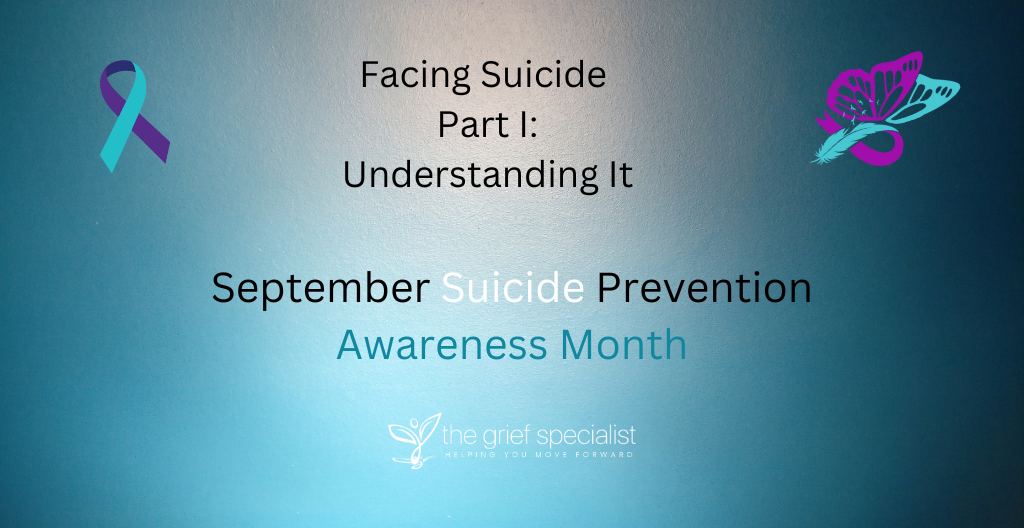Part I: Understanding Suicide
My 24-year-old son took his life on December 14, 2018. It was the second hardest thing I’ve been through. 30 years earlier my 9-month-old daughter died in a day care accident. It was my worst nightmare , until, until my son died by suicide.
When my daughter died so many years prior, there were limited resources to help someone like me to navigate such a tragedy. I did it though. I came through because I wanted to continue to live and because I wanted to live, I assembled tools, acquired techniques, and developed skills that allowed me to do so. It wasn’t easy. I did it with little guidance.
When my son died, I knew things had to be different. I would become a resource for others who want help to work through the death of a child. Child loss has a stigma around it that is not fully understood. Add to child loss the fact their death was by suicide; the stigma is magnified 100-fold like a locust attach in ancient times. In addition, as a Suicide Loss Survivor, there were so many more questions. Although I had been exposed to suicide before, which I will share about later in this series, it was different because it was my own flesh and blood.
Since my son’s death, I have learned more about suicide than I ever dreamed of. I participate in events surrounding suicide education, prevention, awareness and surviving the loss of a loved one to suicide, sharing them with others. My second book, Survive Your Child’s Suicide is a resource in the aftermath. I speak on grief and loss and resilience and perseverance and courage and strength to make it through tough times. It is my mission to walk with others on their journey and coach them so they can accept what has happened while learning how to enjoy life once again.
September is Suicide Awareness & Prevention Month
In this five-part series, I will be sharing information so you can understand suicide, give you tools to identify the warning signs, and increase your awareness to help prevent it. Additionally, I will cover the impact it has on those bereaved by suicide and give you tools to navigate the loss of a loved one.
Facts about Suicide
- Mental disorders, physical disorders and substance abuse are risk factors.
- Some suicides are impulsive acts due to stress, relationship problems, harassment, and bullying.
- Suicide is a major global health problem with 1,300,000 suicides in the world in 2020.
- Suicides increased by 66 percent worldwide from 2019 to 2020.
- There are currently over 47,000 suicides annually in the U.S.
- Suicide is the eleventh leading cause of death in the U.S., which is twice as many deaths as HIV/AIDS.
- There were more than twice as many suicides in the U.S. as there were homicides.
- Approximately 1 in 20 adolescents experience a suicide (friends or relatives) in 1 year and 1 in 5 before their adulthood
What is Suicide?
The Centers for Disease Control and Prevention’s Facts About Suicide web page sheds light on suicide, suicide attempts, and suicidal ideation. According to the CDC:
- “Suicide is self-directed injurious behavior with intent to end your own life as a result of the behavior.”
- “A suicide attempt is a non-fatal, self-directed, potentially injurious behavior with intent to die as a result of the behavior.”
- “Suicidal ideation is when you think about, consider, or plan your own death.”
I’ve heard from others that suicide is selfish. My personal belief is that in difference, this is not the case. The person who chooses to end their life is in pain, physical, mental, emotional, or spiritual pain that is so great that the only way to end their pain is to end the cause of it.
Who Dies by Suicide
It is important to understand that everyone, and I mean everyone, is at risk of dying by suicide. Some are at greater risk than others. Suicide does not discriminate by age, sex, religion, finances, occupation, family history or personality. It can be the kid down the street doing his best to get through high school. It can be the dad toiling endlessly in the office or the daughter working on the factory floor. Suicide even takes young mothers and retired grandmothers. It is our loved ones — brothers, fathers, sons, sisters, mothers, daughters, and grandparents — as well as friends and coworkers. Simply put, suicide knows no boundaries. Suicide affects nearly everyone.
- Men have a higher suicide rate, but women have a higher attempt rate.
- Suicide is the second leading cause of death for people ages 10 to 34.
- Suicide is the fourth leading cause among people ages 34 to 54 and the fifth leading cause among people ages 45 to 54.
- Male suicide to female suicide is 4:1.
- It does not discriminate with age, race, gender, country, region, or education.
When does Suicide Occur?
- According to an article published in 2019 from John Hopkins Medicine website, the months with the highest daily average of suicide were August and July.
- Suicides occur most frequently on Monday.
Where do Suicides Occur?
There is a degree of romanticism around taking one’s life at a popular tourist attraction where others have ended their life. It gives them a sense of connection to those who have died before them. These places have been coined as “suicide landmarks. One such landmark is the Golden Gate Bridge in San Francisco, California.
- About three-quarters of suicide incidents occur at home.
How does Suicide Occur? What are the Methods Used?
In my research, the methods of suicide actually surprised me. Maybe it is because of the multiple suicide losses I have experienced or the means by which my son ended his life. The Suicide Prevention Resource Center’s latest statistics (2020) offer insight into the means of suicide:
- Firearms are now used in more suicides than homicides, making it the fastest growing method, nearly 53 percent of all suicides.
- Next is hanging, suffocation, or strangulation, which compose 27 percent of suicides.
- Solid and liquid poisons or overdoses compose 9 percent.
- The balance of suicides is completed by non-drug poisoning, cutting/piercing, falls, jumping from high places or into fast-moving objects or fires, or intentionally crashing a motor vehicle.
So far, we have learned what suicide is, who dies by suicide, where and when it happens and the means someone uses to end their life.
My son’s suicide was a huge surprise to me. At the time, my surviving daughters and I were advised to stay out of “The Canyon of Why.” We were told we would never discover the truth. I agree. What I did uncover was a general reason why someone choses death over life. Next week, I will reveal what I learned. Educating myself about suicide was helpful in being able to start the healing process. It is my hope that this will serve you as well.
Together, we will travel through Suicide Awareness and Prevention month. Will you do me a favor? Share this five-part series with at least 2 people each week. Better yet, share this link, Home – The Grief Specialist to start receiving Thursday Thoughts in their inbox.
You could change a life, possibly even save one.
Peggy
#helpingyoumoveforward
#suicideprevention
#resilience
#suicidelosssurvivor
#mentalhealthhelp




